This is a revolution in understanding. “The existence of liquid water is not a sufficient condition to determine the existence of life in a place, although it is a necessary condition,” said Ramses Ramirez from the Earth-Life Science Institute (ELSI) at the Tokyo Institute of Technology.
Previously, regardless of how harsh the environment was, scientists found life on the surface of liquid water. These earlier discoveries led us to conclude that as long as there is water, there is life.
However, the exploration of the extreme conditions on this surface has led scientists to discover Dallol, Danakil Depression – an area in the northern part of the Afar Triangle in Ethiopia, resulting from the divergence of three tectonic plates in the Horn of Africa. This salty plain has almost all the extreme conditions that can be found on Earth.
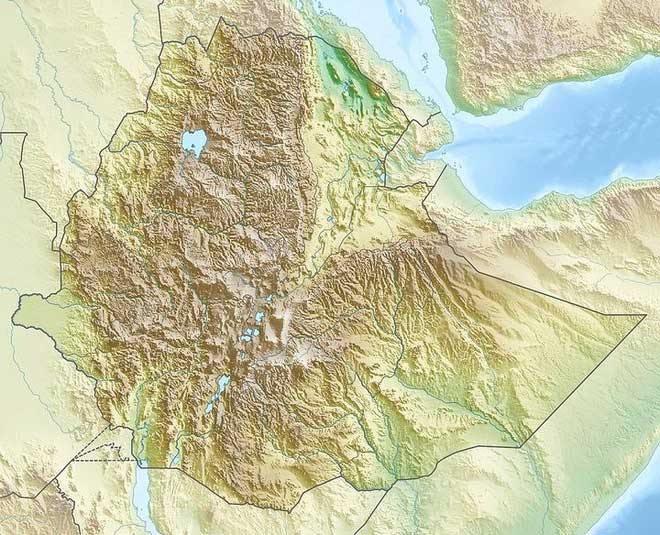
Danakil Depression – northern part of the Afar Triangle, Ethiopia.
This area is located 124 meters below sea level, making it one of the lowest places on Earth. At the same time, it is also one of the hottest places on Earth, with winter temperatures always exceeding 40 degrees Celsius and extremely scarce rainfall.
Locally, the temperature of the brine in the Dallol geothermal area always exceeds 100 degrees Celsius, and the acidity often reaches a negative pH, as low as -1.6. Not only the water but even the air in this area is extremely unique, as it is filled with toxic gases emitted from hot springs and volcanic vents.
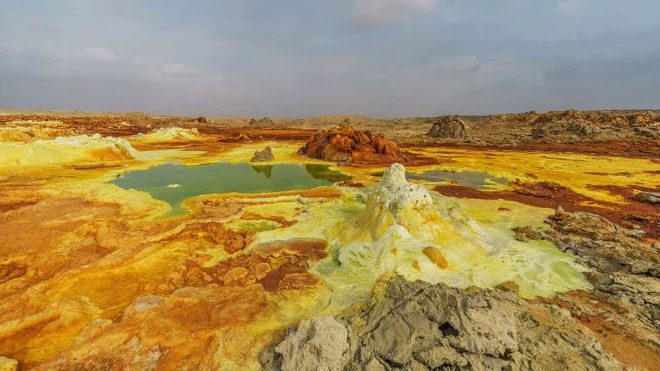
One of the hottest places on Earth.
According to the latest research published in the journal Nature Ecology & Evolution, unlike previous studies, scientists conducted more surveys and experiments and ultimately concluded that there is no life in Dallol – a place with many pools running along a volcanic crater in the Danakil Depression of Ethiopia. This place is filled with salt, toxic gases, and boiling water.
“It’s hell! Not only is it hard to get in, but once you are deep inside, you face high temperatures and scorching toxic gases that an ordinary person cannot withstand,” Felipe Gomez Gomez from the Astrobiology Center in Madrid, Spain, recounted his experience sampling the area in 2017.
Although this place seems like hell, its landscape is magnificent. The ground is scattered with volcanoes, geysers, small depressions, salt, and sulfur vapors.
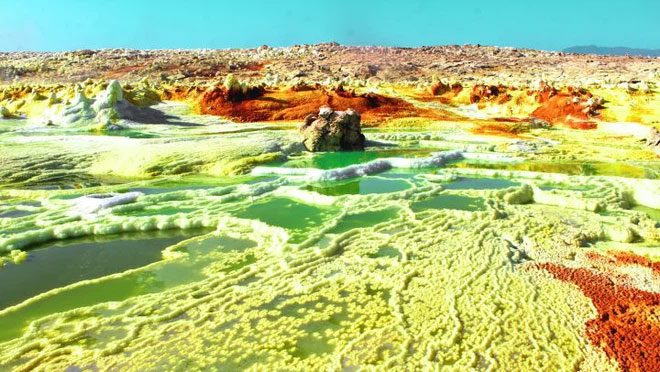
Although it seems like hell, the landscape is magnificent.
Even in winter, daytime temperatures in Dallol exceed 40 degrees Celsius. Some pools have extremely high acidity and salinity.
Minerals such as iron oxides cover the ground, giving it a diverse array of colors, such as yellow, green, orange, and red clay.
From the Pleistocene epoch until 30,000 years ago, the Red Sea periodically flooded the Danakil Depression, then evaporated, leaving a layer of salt and sediment 2 kilometers thick on the surface. Beneath this salt layer lies the magma reservoir of the Dallol volcano, allowing freshwater from surrounding highlands, rich in minerals and acidic gases, to seep in.
Barbara Cavalazzi, a geologist at the University of Bologna, Italy, explains: “The interaction between water, magma, and salt fossils is the source of all the extreme chemical and physical parameters in this area.”
However, the temperature, salinity, and acidity conditions here reach lethal thresholds for most organisms that exist elsewhere on Earth, and life can exist in extremely harsh environments.
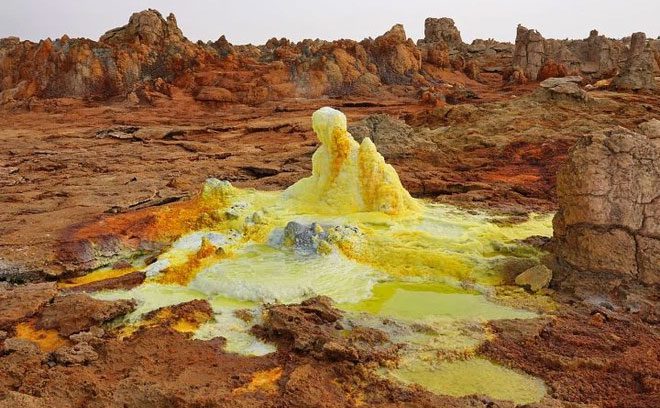
Conditions here are why no organisms can survive in this place.
“After analyzing more samples than before, with a high-precision methodology and appropriate methods to prevent sample degradation, we confirm that there are no living microorganisms in these hot, salty, and super acidic pools, nor in the magnesium-rich salt lakes,” said study author Purificación López García.
For example, the Himalayan jumping spider (Euophrys omnisuperstes) can inhabit altitudes over 6,000 meters; in the Atacama Desert, the driest in the world, seeds can survive for years without water; a species like aquatic worms can withstand arsenic levels 500 times more toxic than for humans.
There are also species with remarkable resilience. Theoretically, many extremophilic bacteria have been found in environments extremely unfavorable for life.
However, in Dallol, there are no signs of life at all. Organisms that could survive in harsh environments seem unable to withstand the combination of extreme conditions here, especially the combination of high acidity and salinity – which may explain why life cannot exist on the Dallol volcano (the water contains too much magnesium, which destroys biological macromolecules and limits the development of life).
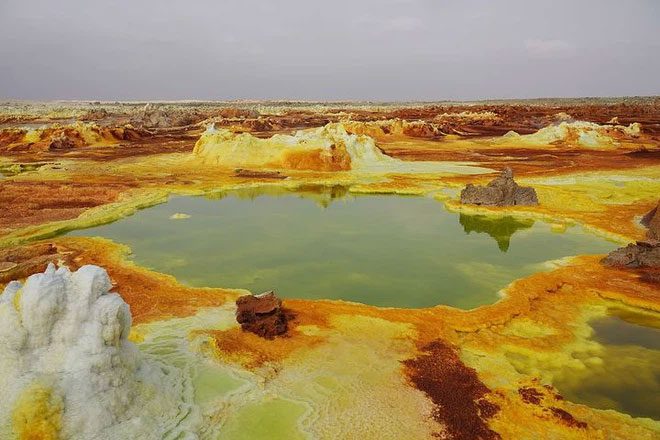
In Dallol, there are no signs of life.
Dallol is a conical volcano in the Danakil Depression in the northeastern part of the Erta Ale range, formed by the intrusion of basaltic magma into Miocene salt sediments and subsequent hydrothermal activity. The last eruption occurred in January 2011. Dallol is the name used by the local Afar people to refer to death and decay. This area is filled with countless green acid pools (with a pH of less than 1), iron oxides, sulfur, and salt flats.



















































